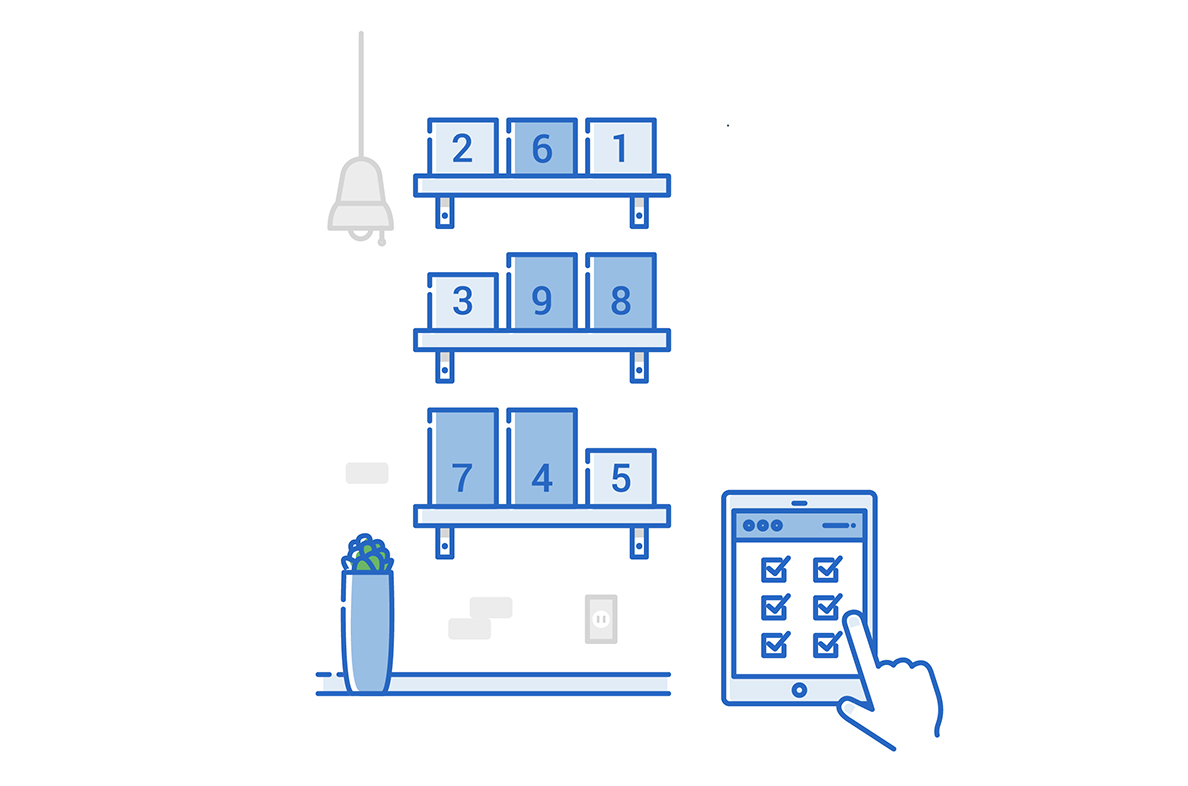Millions of Canadians shop from a screen, because it makes life easier. When shoppers place orders, their work is done, and they’re unaware of what goes on behind the scenes. Meanwhile, your back-end operations have sprung into action to fulfill your promises. You’re busy managing, prioritizing and preparing for fulfillment.
How quickly and efficiently you sort those orders influences brand perception, determines whether or not you meet customer expectations and can have a significant impact on shopper loyalty. Taking the time to optimize your processes sets you up for success.
Investing in technology
An efficient order sorting system is also about the health of your business – reducing road blocks, containing costs and making the best investments in technology as you start or grow your e-commerce operation. E-commerce platforms can provide you with basic inventory management. Start by exploring how your existing technology can help you manage inventory and order sorting processes. As you grow, you may need to invest in additional technology to sync inventory across multiple channels, and manage increasing complexity as you process more orders. That’s when you can layer on technology like ShipStation, OrderCup or Canada Post’s free shipping tools. And, as you start to sell across channels, order management tools like Ordoro can help you deal with growing pains.
Picking the logical solution
Choosing your order-routing logic can be challenging, because not all orders – or e-commerce operations – are alike. However, whether you’re selling from your own site, in-store, a marketplace or via third parties – with inventory in one place or spread across multiple sites –there’s a process that fits your needs:
First-in-first-out (FIFO):
Great for small-volume sorting. This is a popular method for merchants starting out. If you stick with this system as volume grows, strive for a clean-floor policy, by shipping orders placed the previous evening until the cut-off time you’ve set to meet your delivery promise (or your carrier’s pickup deadline).
Delivery Speed:
The bigger you get, the more complex the sorting logic. You need to be able to offer a choice of delivery speeds to meet different shopper expectations. Prioritize next-day-delivery orders to match required speeds, and maybe those that have farther to travel. Make sure you’re prepared in advance by enabling shipping alternatives like Priority™, Xpresspost™ and Expedited Parcel.
Customer-service focused:
Prioritize exchanges or replacements. Or you can impress your most loyal customers (such as members) with a seamless returns experience. When you deliver quickly and accurately, you become known for your responsive customer service, and loyalty follows.
Product deliverability:
If you’re sourcing stock from multiple suppliers – or that hot item sells out fast but you know new stock is coming – you can wait to ship when all order items are in stock.
Want tips to streamline your e-commerce ops – from receiving orders to managing returns?
Get the e-bookOmni-channel order picking
What if a customer orders several items but stock is spread across locations? If you’re an omni-channel retailer, don’t attempt to sort orders without the help of technology. It will be too painful! Choose technology that can sort orders across physical and digital channels, and matches inventory with delivery location for quick, cost-effective order management. Pick the option that works best for your business:
Customer proximity:
Using this logic, you pull inventory that’s closest to the customer. You’re aiming for the least cost and fastest delivery speed. Be careful, as this method could lead to multiple shipments that may bump up costs and slow down delivery.
Ship from a store:
When a customer places an order, it’s assigned to the closest participating store that has the item on hand. This could be faster than shipping from a distribution centre. In the ship from store method, your employees package the orders and print shipping labels, and your carrier picks up the parcels in-store to take care of delivery.
Consolidation:
Pick items from various locations, and bring them to one spot for shipping in a single parcel. It’s really hard to do this manually, so you’ll need an order management system (OMS). It will tell you where to find the in-stock items and use pre-determined logic to pick the order from the best locations, based on speed and cost.
Get expert e-commerce help
Whether you’re just starting, or optimizing as you grow, Canada Post’s e-commerce experts can help.
Contact an expert
